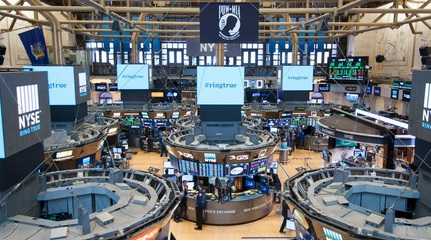
NEW YORK (AP) — Stocks wavered in afternoon trading on Wall Street Tuesday, but remain in the red for the week following the biggest pullback in the S&P 500 since mid-June.
The S&P 500 fell 0.1% as of 12:08 p.m. Eastern. The benchmark index is down 2.2% for the week following a sell-off on Monday.
The Dow Jones Industrial Average slipped 127 points, or 0.4%, to 32,935 and the Nasdaq rose 0.1%.
Energy stocks made solid gains as U.S. crude oil prices rose 3.7%. Exxon Mobil gained 3.8%.
Health care stocks fell broadly and checked gains elsewhere in the market. Eli Lilly fell 1.7%.
Investors had several earnings reports to focus on as the latest round of corporate financial results comes to a close. More than 95% of companies in the S&P 500 have reported earnings, with overall growth of about 6%, according to FactSet.
Macy’s rose 5% after beating Wall Street’s second-quarter financial forecasts and J.M. Smucker gained 3% after reporting strong earnings. Zoom Video slumped 15.1% after cutting its profit and revenue forecasts for the year.
Twitter slipped 5.3% on reports that a former head of security filed whistleblower complaints with U.S. officials, alleging that the company misled regulators about its cybersecurity defenses and its problems with fake accounts. The allegations come amid the ongoing dispute with billionaire CEO Elon Musk, who is trying to withdraw his $44 billion takeover bid for the social media company.
Investors are looking ahead to the Federal Reserve’s annual meeting in Jackson Hole, Wyoming, later this week as they grapple with uncertainty over inflation, the economy and the central bank’s plan to fight high prices.
Worries about inflation and recessions globally have brought the euro below parity with the dollar, breaking a psychological barrier in the markets.
Bond yields fell. The yield on the 10-year Treasury slipped to 3.00% from 3.03% late Monday. It remains below the yield on the two-year Treasury, a gap viewed by many investors as a potential signal for a coming recession.
Inflation remains at its hottest level in four decades and that is straining businesses and consumers. The U.S. economy shrank during the first half of 2022, though consumer spending and the employment market remain pockets of strength. The Fed has been raising interest rates to pump the brakes on the economy to bring inflation under control.
Wall Street is concerned that the Fed could hit the brakes too hard and veer an already slowing economy into a recession. Minutes last week from the Fed’s July board meeting affirmed plans for more rate hikes Investors could gain more insight into the Fed’s future plans at the annual meeting this week, which starts Thursday and includes a speech by Fed Chair Jerome Powell on Friday.




